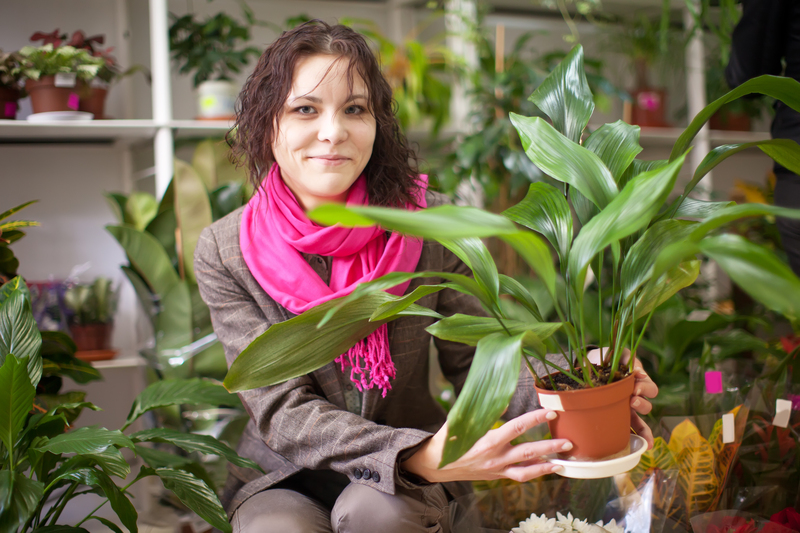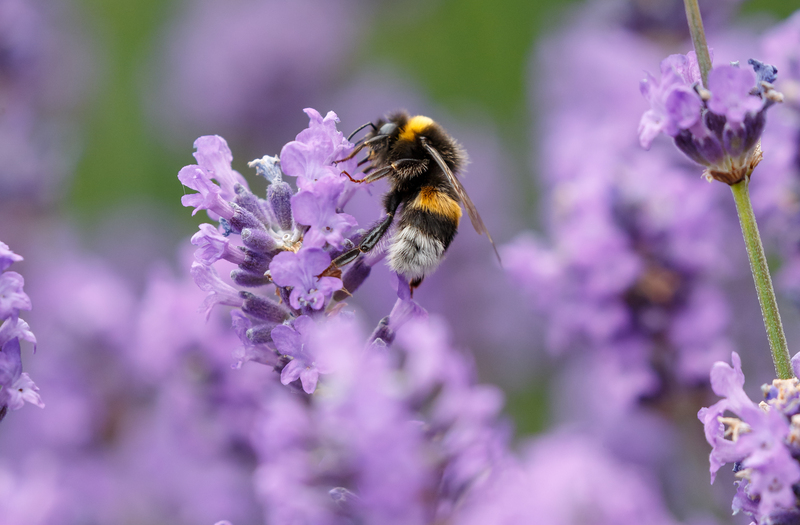Gardening: An Accessible Means to Address Climate Concerns
Posted on 02/06/2025
Gardening: An Accessible Means to Address Climate Concerns
In today's rapidly changing environment, climate concerns are at the forefront of societal discussions. With global warming, deforestation, and urbanization impacting the earth's ecosystems, individuals and communities are seeking actionable solutions to minimize their ecological footprint. Gardening emerges as an accessible, practical, and powerful tool to address climate challenges, offering benefits that go well beyond beautifying spaces.
Understanding the Link Between Gardening and Climate Change
Climate change remains one of the most pressing issues of our time, driven chiefly by greenhouse gas emissions, particularly carbon dioxide, methane, and nitrous oxide. Human activities such as industrialization, deforestation, and unsustainable agriculture accelerate these releases into the atmosphere. However, the act of gardening--whether in backyards, rooftops, or community spaces--presents a suite of opportunities to both mitigate and adapt to these changes.
The Science Behind Gardening and Climate Mitigation
- Carbon Sequestration: Plants absorb carbon dioxide (CO2) from the atmosphere during photosynthesis, locking it into their tissues and the soil--a process known as carbon sequestration.
- Cooling and Microclimate Regulation: Vegetation moderates local temperatures by providing shade, releasing moisture via transpiration, and reducing urban heat island effects.
- Biodiversity Enhancement: Gardens support a rich tapestry of plant and animal life, encouraging resilient ecosystems that are better equipped to withstand climate stresses.
- Soil Health Improvement: Healthy, organic-rich soils cultivated through sustainable gardening can store greater amounts of carbon, aiding in long-term climate regulation.

How Home and Community Gardening Reduces Carbon Footprint
Gardening at a local level, whether at home or in the community, addresses climate concerns directly by reducing reliance on resource-intensive global food chains, increasing green cover, and promoting circular, sustainable systems.
Localizing Food Production
Growing fruits, vegetables, and herbs in home or community gardens can dramatically cut down 'food miles'--the distance food travels from farm to plate. Less transportation means reduced fossil fuel use and lower greenhouse gas emissions. By producing food locally, gardeners reduce dependence on industrial agriculture, which often requires heavy machinery, synthetic fertilizers, and pesticides--major contributors to climate change.
Composting: Turning Waste Into Climate Solutions
A core aspect of sustainable gardening is composting. Instead of sending kitchen scraps and yard waste to landfill--where they decompose and generate methane, a potent greenhouse gas--composting recycles organic matter into nutrient-rich humus for your garden. This process:
- Reduces landfill waste
- Produces natural fertilizer, decreasing dependency on chemical inputs
- Enhances soil structure and carbon storage
Supporting Pollinators and Biodiversity Through Thoughtful Planting
Climate concerns are exacerbated by declining pollinator populations and biodiversity loss. By selecting native, flowering plants and creating habitat diversity, gardeners support bees, butterflies, and other pollinators critical to food production and ecosystem health. Diverse plantings stabilize habitats, foster resilience to pests and diseases, and help ensure forests, meadows, and gardens can weather changing environmental conditions.
Practical Gardening Strategies for Climate Action
Adopting Sustainable Gardening Practices
- Mulching: Applying organic mulch retains soil moisture, reduces evaporation, prevents weed growth, and slowly adds carbon to the soil as it breaks down.
- Minimizing Synthetic Inputs: Relying on natural fertilizers and organic practices limits chemical runoff and soil degradation, preserving long-term soil health and reducing greenhouse gas production.
- Water Conservation: Utilizing rain barrels, drip irrigation, and drought-tolerant plants lessens unnecessary water use--a growing concern in climate-impacted regions.
- No-Dig or Low-Till Gardening: Maintaining soil structure minimizes disturbance to the soil microbiome, enhancing carbon storage and nutrient cycling.
Choosing the Right Plants for Climate Resilience
Plant selection can make a garden more climate-friendly and adaptable:
- Native and Climate-Adapted Vegetation: These species thrive with minimal intervention, conserve water, and require less fertilizer.
- Diverse Plant Communities: Mixing annuals, perennials, trees, and shrubs creates resilient gardens that withstand extreme weather and support broader wildlife populations.
The Role of Urban Gardens in Climate Adaptation
Urban environments are particularly vulnerable to climate challenges such as heatwaves, poor air quality, and flash flooding. By greening cities through rooftop gardens, vertical gardens, and pocket parks, urban dwellers can address these issues head-on.
- Heat Mitigation: Plants on rooftops and facades reduce surface temperatures, lessening the need for energy-intensive air conditioning.
- Stormwater Management: Gardens absorb rainwater, reduce runoff, and help replenish groundwater, mitigating urban flooding.
- Improved Air Quality: Plants filter pollutants and release oxygen, promoting healthier city living.
Community Gardens as Hubs for Climate Education and Action
Community gardening initiatives offer more than fresh produce--they build social cohesion and spread eco-conscious practices. By participating, individuals learn firsthand about composting, permaculture, water conservation, and native plantings. These green spaces foster local leadership, empower people to take climate action, and serve as living examples of how gardens can address climate concerns in accessible, replicable ways.
Gardening's Broader Environmental Benefits
Apart from its direct impact on climate, gardening delivers a suite of environmental advantages that ripple through ecosystems and communities:
- Erosion Control: Plant root systems hold soil in place, reducing erosion and sedimentation in rivers and streams.
- Improved Soil Fertility: Through organic matter addition and careful stewardship, gardeners enhance the land's productive capacity without depleting natural resources.
- Wildlife Corridors: Well-planned gardens serve as stepping stones for birds, insects, and small mammals navigating increasingly fragmented landscapes.
- Personal Well-Being: Gardening boosts mental and physical health, deepening connections to nature and promoting eco-friendly living.
Tips for Getting Started: Gardening to Address Climate Concerns
1. Assess Your Local Climate Zone
Begin by determining your local climate and selecting plants that thrive under those conditions. This reduces water, energy, and fertilizer requirements, supporting more sustainable gardening practices.
2. Prioritize Native and Pollinator-Friendly Plants
Choose native species, wildflowers, and local shrubs whenever possible. These plants support indigenous wildlife, require less maintenance, and are well-suited to the environmental pressures of your region.
3. Incorporate Mulching and Composting into Routine Care
Recycle yard clippings and food scraps by composting, then apply the finished compost to garden beds. Mulch regularly to maximize moisture retention and suppress weeds naturally.
4. Embrace Water-Efficient Techniques
Install drip irrigation systems, use rain barrels, and group plants by water needs to minimize consumption and protect precious water resources.
5. Limit Chemical Inputs
Opt for organic pest management, crop rotation, and natural fertilizers. Healthier soils sequester more carbon and boost long-term productivity.
Making a Difference, One Garden at a Time
Every seed sown, every compost pile tended, every native flower planted is a step towards a more sustainable future. By harnessing the power of gardening, ordinary individuals and communities can:
- Lower carbon emissions
- Support wildlife and pollinators
- Conserve water and enrich urban environments
- Educate others about eco-friendly practices
- Improve personal health and neighborhood resilience
Gardening is not just a pastime, it is a potent, accessible means to address climate concerns that brings people together in pursuit of ecological harmony.

Frequently Asked Questions About Gardening and Climate Action
Is gardening enough to solve climate change?
While gardening alone cannot reverse climate change, it forms an essential piece of a larger climate solution. When combined with energy conservation, sustainable transportation, environmental policy, and green innovation, gardening amplifies personal and collective efforts to combat climate disruption.
What are some climate-smart crops I can grow?
- Drought-resistant varieties: Such as lavender, sage, amaranth, and edible cacti
- Perennials: Like asparagus, rhubarb, and fruit trees, which typically require less annual input
- Cover crops: Such as clover or vetch, to enrich soil and prevent erosion
How can I garden sustainably in a small apartment?
You can use container gardening, vertical gardens, or join a nearby community garden. Compost kitchen scraps, grow herbs indoors, and select low-maintenance houseplants that improve air quality.
Conclusion: Cultivating Gardens, Nurturing the Planet
In the face of daunting climate concerns, gardening offers a hopeful, hands-on approach accessible to virtually everyone. By transforming lawns, balconies, or vacant lots into oases of green, gardeners help buffer carbon emissions, safeguard biodiversity, and inspire sustainable living. Every plot, no matter how modest, helps heal the earth and fosters a culture of environmental stewardship.
So, the next time you plant a seed or turn the compost pile, remember: you are part of the climate solution. Through gardening, even small acts of cultivation can yield transformative benefits for the planet and future generations.

